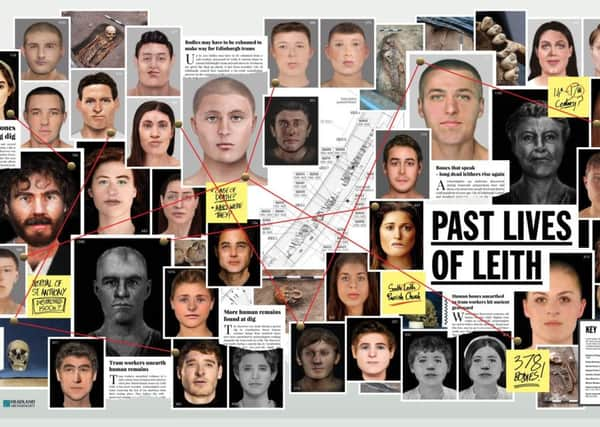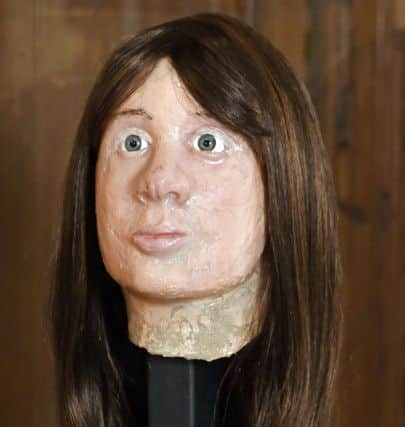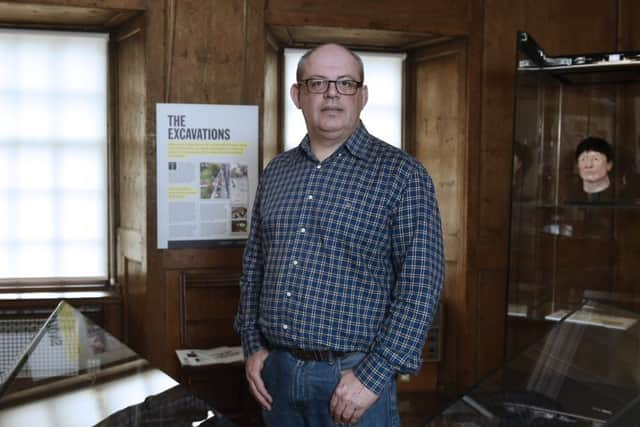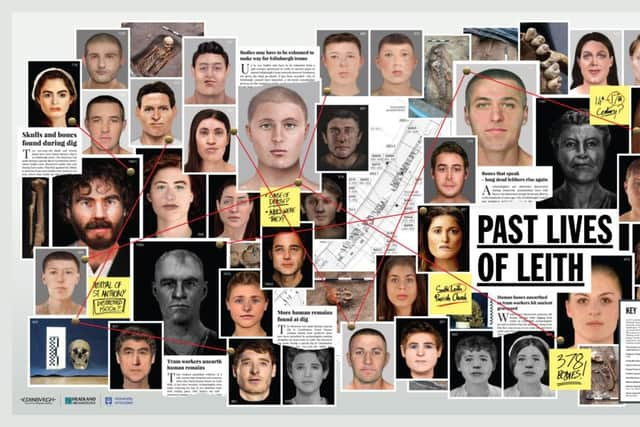Nearly 400 old Edinburgh faces revealed a decade after remains discovered during tram works


Nearly 400 bodies covering a period of more than 350 years were found beneath a main road next to a historic churchyard in Leith during a six-month dig in 2009.
A decade of painstaking detective work pieced together how people were buried, what illnesses they had endured, and the way they lived their lives.
Advertisement
Hide AdAdvertisement
Hide AdArchaeologists and forensic scientists have created personal profiles and images for dozens of those discovered beneath Constitution Street.


The 378 people whose remains were exhumed are being honoured in a new book and exhibition at the Museum of Edinburgh reveal new evidence of defences built to protect Leith in the 16th and 17th centuries, before Constitution Street was built in the 1790s.
Exploratory work on part of the tram route uncovered evidence that bodies had been buried outwith the modern-day boundary of South Leith Parish Church’s graveyard - contrary to its own records.
The research into the biggest ever excavation of a medieval cemetery in Edinburgh has revealed that Leith has been a site of worship for more than a century more than believed.
Advertisement
Hide AdAdvertisement
Hide AdThe burials were found to date back to the early 14th century when Leith was on its way to become Scotland’s main trading port, with fish, wool, timber, wine and spices being imported and exported.


Among the curious aspects to the burials were that there 50 per cent more women then men, and only three of the individuals examined were found to be over 45. Some people were said to be from Arbroath, the Cairngorms and even England.
The way they were buried has prompted suggestions that people may have had a “bad death” during an armed siege or that the graveyard itself may have been built well before the church, which dates back to 1483, in the wake of a devastating plague.
The research states: “Forensic evidence makes it obvious these people led hard lives. Malnutrition was significantly more common here than the late-medieval average. The average male and female statures were below the British average for this period, particularly for women. While this may be genetic, it’s more likely poor diet and illness prevented these people from reaching their full potential height.”
Advertisement
Hide AdAdvertisement
Hide AdJohn Lawson, the city council’s archaeologist, worked on the project with archaeology consultancy Headland and experts at Dundee University.


He said: “The discoveries of these burials in this location, although always a possibility, was nevertheless a surprise.
“It has allowed us to highlight the lives of the ordinary person, by putting a face to these individuals and showing how they lived and died.”
Julie Franklin, finds and archiving manager at Headland, said: “Leith has persevered through sieges, famines, economic hardships and endless plagues. Weaving the sometimes harrowing, sometimes surprising story of the town and those who lived and died in it from the many strands of evidence has been a fascinating process.”
Advertisement
Hide AdAdvertisement
Hide AdDr Christopher Rynn, from Dundee University’s Centre for Anatomy and Human Identification, said: “Using forensic techniques of facial approximation and reconstruction, in combination with archaeological evidence and artefacts, individuals can be depicted in a way that provides a human, interpersonal element and some context on their lives.”